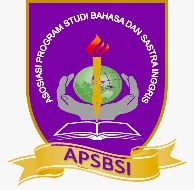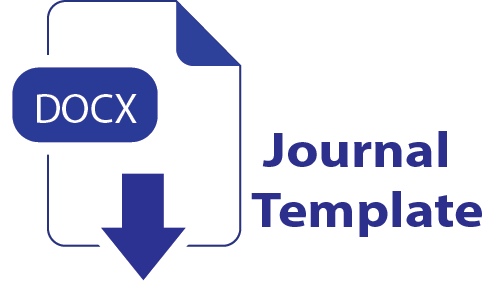ERROR ANALYSIS ON THE USE OF TO BE AS AUXILIARY AND LINKING VERB IN THE STUDENTS’ RECOUNT TEXT (A Case of the 8th Grade Students of SMP N 19 Semarang in the Academic Year of 2013/2014)
Abstract
This final project was conducted to analyze the students’ errors on the use of to be as Auxiliary and Linking verb on the students’ recount text that made by eight grade students of SMP N 19 Semarang in the academic year of 2013/2014. This study has three objectives; i.e. to identify errors, to find out the most frequent errors and how to avoid errors on the use of to be as auxiliary and linking verb. The population of this study was eighth grade students of SMP N 19 Semarang. This study used purposive random sampling and one class had been taken as the sample under the consideration that the number of the sample was about 10% - 15% from the population. I chose class 8B which consist 31 students, but only 28 students could participate on the research. This study used qualitative research method in analyzing the data since the aim of the study is to identify errors, to find out the error, type and how to avoiding error on the use of to be as Auxiliary and Linking verb. In gathering the data, I conducted the instructions for the students’ free writing using some topics that had been prepared before the research on 10 may 2013. To find out the errors, I used the error taxonomy according Dulay, Burt and Krashen (1980:50). I classified the errors into 4 types that are Omission, addition, misinformation and misordering. The result showed that 11.3 % from the total findings belongs to errors on the use of Auxiliary verb which consisted of 8.1 % in misinformation types and 3.2 % in omission types and 88.7 % from the total findings belongs to errors on the use of Linking verb which consisted of 45.2 % in misinformation types, 20.9 % in omission types, 19.4 % in addition types and 3.3 % in misordering types. After analyzing and counting the data, I found out that the most frequent errors were errors on the use of Linking verb which were dominated by misinformation types.
References
Anderson, Mark and Anderson, Kathy. 1997. Text types in English. Australia : Macmillan.
Arikunto, Suharsimi. 2006. Prosedur Penelitian: Suatu Pendekatan Praktik. Jakarta: Rineka Cipta.
Azar, Betty Schrampfer. 1989. Understanding and Using English Grammar. New Jersey: Prentice Hall.
Brown, H.D.1980.The Principle of Language Learning and Teaching. New Jersey: Prentice Hall.Inc.
Brown, H.D. 2001.Teaching by Principles An Interactive Approach to language Pedagogy second edition. New york : Longman
Ellis, Rod. 1997. Second language acquisition. Oxford : Oxford University Press.
Ellis, Rod. 1994. The study of second language Acquisition. New york : Oxford University Press.
Frank, Marcella. 1972. Modern English a practical reference guide. New Jersey : New york University.
Harmawati, Rina. An analysis of errors in using of the simple present tense in the students short composition (A case study at the eight grade students of SMPN 3 RonggaCihampelas. STKIP University, Bandung.
Hornby,A.S. 1995. Oxford Advanced Learner’s Dictionary. Oxford University Press.
Ixchell.2012 .Three strategis for teaching grammar in ESL.http://www.showme.com/blog/2012/07/three-strategies-for-teaching-grammar-in-esl/
Access on 15 July 2014
James, Carl. 1998. Errors in language learning use. London and New York: Longman.
Kariadi, M.T. 2008. Errors in using finite verbs in recount text written by 8th grade students of SMP N 1 Semarang theacademic year 2007/2008. Semarang state University, Semarang.
Nunan, D. 1992. Research Methods in Language Learning.Cambridge : Cambridge University Press
Patton,M. 1990. Qualitative evaluation and research methods. Beverly Hills, CA:Sage
Putra, Adi Jaya. 2008. An error analysis on verb usage in English writing ( A Case study at the third year students of SMK PuspitaBangsaCiputat). SyarifHidayatullah State Islamic University, Jakarta
Ramelan. 2001. Introduction to Linguistics Analysis. Semarang: IKIP Semarang Press.
Richards, J. C. 1974. Error Analysis (Perspective on Second Language Acquisitions). London: Longman Group Ltd.
Santosa, Rochmat, budi. 2011. Error analysis in the use of be in the students’ composition.STAIN University, Surakarta.
Saleh, Mursid. 2001. Pengantar Praktik Penelitian Pengajaran Bahasa.Semarang : IKIP Semarang Press.
Shah, FarhanazBT.MohdBaldev. 2007. The acquition of to be as an auxiliary verb and linking verb in the written work of Malaysian ESL learners. International Islamic University, Malaysia
Suter, W Richard and Stanley J. Cook. 1980. The Scope of Grammar ; A study of modern English. New York : McGraw-Hill book company.
Veit, Richard. 1986. Discovering English Grammar. U.S.A : Houghton Mifflin Company.
Watcharapunyawong, Somchai and Usaha, Siriluck. 2012. Thai EFL Students’ writing errors in different text types: the interference of the first language. Canadian center of science and education. Pp. 1 – 12.
Zawahreh, Dr.Firas, Ali, Suleiman. 2012. Applied error analysis of written production of English essays of tenth grade students in Adjloun schools Jordan. International Jurnal& development. Pp. 1 – 20.
http://www.educ.ualberta.ca/staff/olenka.bilash/best%20of%20bilash/grammar.html
Access on 7 June 2014
http://www.englishtenses.com/tenses/past_continuous
Access on 20 may 2014



_.jpg)
_.jpg)




